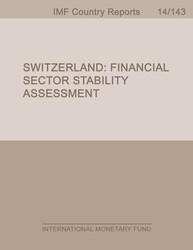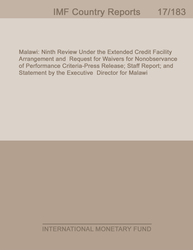
Switzerland: Financial Sector Stability Assessment
EXECUTIVE SUMMARYSwitzerland's financial sector is one of the largest in the world, especially relative to GDP. It is home to two of the largest banks, which are designated as globally systemically important financial institutions (G-SIFIs), and one of the largest reinsurance companies. The two global banks, account for 43 percent of Swiss banking sector deposits and 18 percent of capital; in addition, there are 24 cantonal banks, one of which has been designated a domestically systemically important financial institution (D-SIFI), as well as the newly licensedPostfinance, a cooperative Raiffeisenbank, and small private and regional banks. The two global banks––particularly UBS––were hard hit by the recent global financial crisis (GFC); the rest of the banking sector emerged relatively unscathed.In response to the GFC the Swiss authorities took forceful action. The single supervisor, the Swiss Financial Market Supervisory Authority (FINMA), became operational in 2009. Capital standards were raised above Basel minima and ahead of the Basel implementation timetable.Additional capital buffers were imposed on the two large banks, and contingent capital instruments (CoCos) introduced. Macroprudential instruments were analyzed, and at end-September 2013 a countercyclical capital buffer (CCB) targeting residential propertymortgages took effect; an increase in the CCB was announced in January 2014, to take effect from June 2014. The insurance industry became subject to the Swiss Solvency Test (SST).Stress tests indicate that the banks are robust against even severe shocks. Banks have increased their capital, and the two global banks have achieved substantial deleveraging. FINMA has focused on significantly improving the quality of its supervision. That said, identification of individual bank risk was hindered as legal constraints prevented the Swiss authorities from providing regulatory data at the individual bank level. Hence the stress tests will not have served to indentify outliers in performance.Nonetheless, there remain important vulnerabilities and challenges to financial stability:• The Swiss economy is among the most interconnected in the world and is deeply exposed to volatility in the European Union (EU). Stresses in the euro area periphery led to "safe haven" flows to the Swiss franc, putting sustained upward pressure on the rate, which the authorities seek to counter through maintaining an exchange rate floor.• Real estate bubbles appear to be emerging; with monetary instruments not available, macroprudential instruments are being introduced, but so far are limited and untested.• While important progress has been made in addressing too-big-to-fail (TBTF) and too-big-to- save (TBTS) issues, this is still a work in progress.• Interest rates are negative at some maturities, threatening the business models of life insurance and pension companies. Temporary alleviation from the SST is in effect through 2015.
Publication date: May 2014
ISBN: 9781498340809
$18.00
Add to Cart by clicking price of the language and format you'd like to purchase
Available Languages and Formats
| English |
Prices in red indicate formats that are not yet available but are forthcoming.
Topics covered in this book
This title contains information about the following subjects.
Click on a subject if you would like to see other titles with the same subjects.
Money and Monetary Policy , International - Economics , Public Policy ,
Also of interest
Summary
Copyright © 2010 - 2024
Powered by:
AIDC



